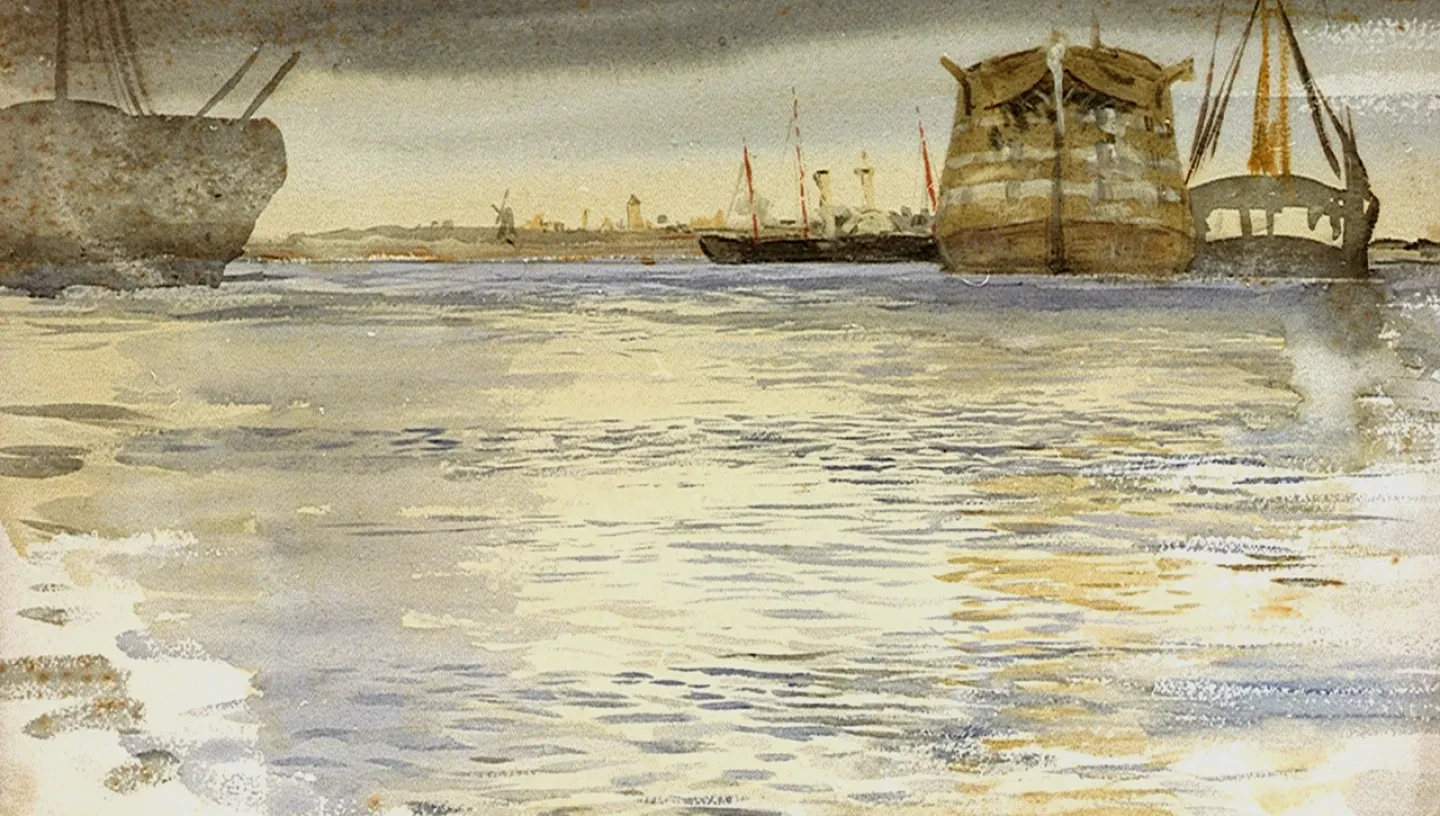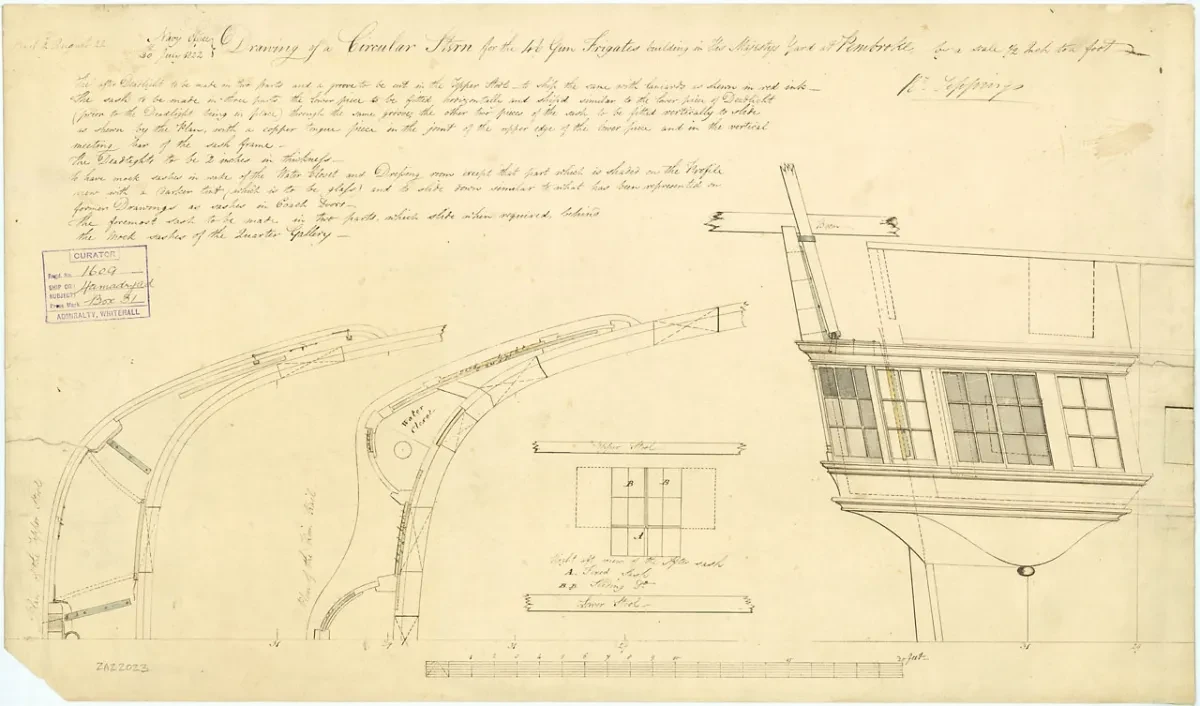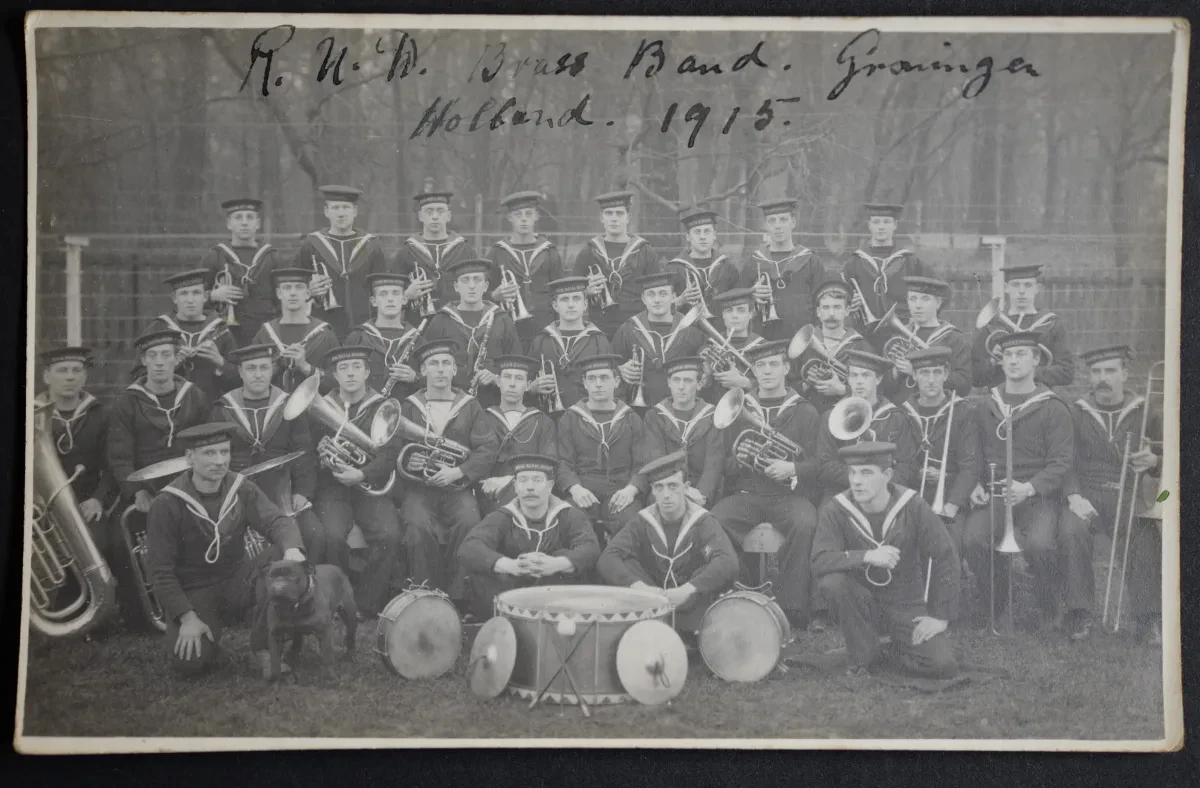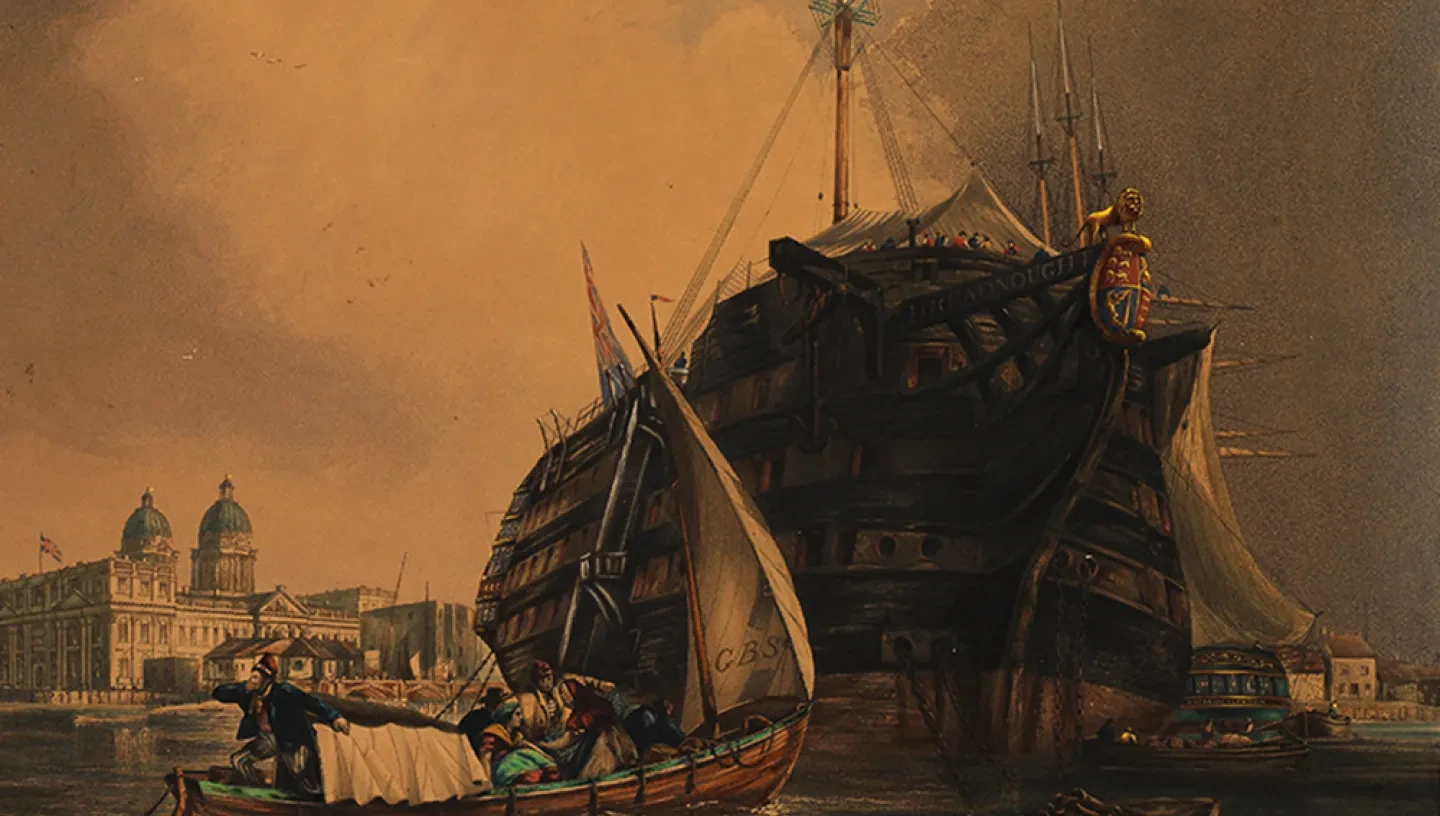
Discover some of the surprising entries recently discovered in the medical records of the Dreadnought Seamen’s Hospital.
The Dreadnought Seamen’s Hospital at Greenwich was the main clinical site of the Seamen’s Hospital Society (now Seafarer’s Hospital Society), founded to bring relief to sick and injured seafarers of all nations. The HMS NHS: The Nautical Health Service project was launched in 2021 to transcribe the many thousands of entries in the hospital admission registers between 1826 and 1930. The amazing work of the HMS NHS volunteers will provide researchers with opportunities to explore more than one hundred years of medical care provided at the centre of maritime Greenwich.
A hospital for seafarers in Cardiff
In promoting the HMS NHS Project, claims are made about the unique place of the Dreadnought Seamen’s Hospital in the context of medical history. We have in mind its origins as a repurposed warship, its mission to provide free medical care to merchant seafarers as a single occupational group, and funding that was based on voluntary contributions. However, we need to acknowledge the existence of another establishment of this kind in the United Kingdom, namely the Royal Hamadryad Seamen’s Hospital in Cardiff.
The story of this hospital goes back to the mid-nineteenth century and the main personality is Dr Henry James Paine (1817-1894). Paine was responsible for important reforms in sanitation during his tenure as the first medical officer of health for Cardiff. He believed that a floating hospital was the best means of stopping the spread of cholera and other infectious diseases which might be brought into the port. There was some opposition to his ship scheme, but nonetheless he was finally able to arrange for the conversion of a warship loaned from the Admiralty. HMS Hamadryad (1823) was a modified Leda Class frigate which had been laid-up in reserve at Devonport for many years and destined to go to the breakers. She began operating as a hospital ship from November 1866, located for a few months in the Bute East Dock, then later on a tidal part of the waterfront near to the sea lock of the Glamorganshire Canal.

An Admiralty plan for the circular stern of the 46-gun fifth rate frigates HMS Hamadryad (1823) and HMS Thisbe (1824), built at Pembroke Dockyard, 1822. © National Maritime Museum, Greenwich, London.
The Hamadryad was slightly smaller in size than HMS Grampus ex Tiger (1802), the first warship to be fitted for the use of the Seamen’s Hospital Society at Greenwich. The alterations included the addition of a roof to enclose more of the deck space. The Hamadryad was able to accommodate around 60 in-patients, with admissions restricted to seafarers and passengers passing through the ports of Cardiff, Barry and Newport. During four decades of operation, the ship provided treatment for around 173,000 patients. Together with a nearby annexe, it was for many years the only facility in Cardiff for isolating patients with infectious diseases. It was also successful financially, as contributions drawn as a levy from shipping companies benefitted from the rapid increase in tonnage entering Cardiff docks.
Towards the end of the century, it was determined that a replacement hospital with a greater capacity would be built on land nearby to mark the Diamond Jubilee of Queen Victoria in 1897. The Royal Hamadryad Seamen’s Hospital was opened in June 1905. The condition of the ship had much deteriorated and in September of the same year arrangements were made for her to be towed away for breaking at Appledore. The local press reported that hundreds of rats were dislodged during the operation to remove the hulk from her mud berth. Before being swept away by later redevelopments, this area with its community of house boats was referred to as ‘Rat Island’.
The ‘stone frigate’ version of the hospital continued in operation until it was incorporated into the National Health Service as a general hospital in 1948. Remnants of the building have recently been in use for the mental health services provided by the Cardiff and Vale University Health Board; while nearby is an open area named Hamadryad Park.
More information on the history of the Royal Hamadryad Seamen’s Hospital can be found on the website of The Royal Commission on the Ancient and Historical Monuments of Wales. See also the booklet ‘I saw Three Ships…’ by Dr John Mayberry, Silver Link Publishing Ltd., St Michaels, 1987.
Some relevant archive material is held at Glamorgan Archives (catalogue reference BC/HAM).
The curious case of Harry South
Last month our attention was drawn to the Dreadnought Seamen’s Hospital record for Able Seaman Harry South, official number KW/945, serving with the Benbow Battalion, Royal Naval Division, admitted with neuritis on 12 July 1917. He was discharged to the Royal Naval Hospital at Chatham six days later. The clerk has rather misleadingly recorded this individual as a ‘prisoner of war’.
South was in fact one of around 1,500 men of the 1st Naval Brigade who were interned in Holland for most of the First World War. In early October 1914 their defensive positions to the southeast of the strategic port of Antwerp in Belgium were quickly overwhelmed by German troops. Their only remaining escape route was into neutral Holland, so Commodore Wilfred Henderson took his men across the border near the town of Hulst. Their status was then governed by the Hague Convention of 1907, which declared that troops belonging to a belligerent army who entered the territory of a neutral country had to be interned away from the theatre of war. The Dutch authorities decided to transport them to the northern city of Groningen. The 1st Naval Brigade was later accommodated in a purpose-built camp, known to locals as ‘the English Camp’, and to the British as HMS Timbertown.
South was born in Bradford in 1881, and in civilian life was a textile worker at Batley, also in Yorkshire. He had some previous military experience, serving with the 3rd Battalion, King’s Own Yorkshire Light Infantry, between 1899 and 1905. An extract from a letter he sent to the mayor of Batley from the camp at Groningen can be found in the 8 April 1915 issue of the ‘Yorkshire Factory Times’. South expresses appreciation for the kind treatment and gifts of toys his family had received while he was detained abroad. We know that he wasn’t separated from his family throughout the rest of the conflict. From 1916 onwards, internees at HMS Timbertown were granted compassionate leave, particularly when evidence was provided of ill health or other circumstances in which next-of-kin needed support back home. In the following year a system of group leave was in place, but it was strictly regulated.

A postcard showing the Royal Naval Division brass band at HMS Timbertown, 1915, from a collection relating to Able Seaman Ernest E. Russell, who also served in Benbow Battalion (RMG reference: MSS/75/073). © National Maritime Museum, Greenwich, London.
The case of Harry South has generated considerable discussion among our volunteers. So far, no other internees from Holland have been found in the Dreadnought records and some puzzles remain. We know there was a sick bay at HMS Timbertown and serious medical cases were transferred to the Academisch Ziekenhuis in Groningen. So why was South sent to Greenwich in July 1917? More bizarrely, why does his Royal Naval Division service record say that he was born in Boston, Massachusetts?
It has been suggested that in the context of admission records from this period, the meaning of the term neuritis is likely to equate to post traumatic stress disorder (PTSD), rather than a specific type of inflammation of the nerves. Shortly before he was discharged in January 1919, South had a medical examination at Aldershot and was diagnosed with neurasthenia, wholly attributed to his war service. It seems likely therefore that his admission to the Dreadnought related to mental illness and this condition had lasting effects. Perhaps the Dutch authorities judged that it was better for him to receive treatment on home turf, away from the confines of the camp.
A record of Harry South’s service in the King’s Own Yorkshire Light Infantry (reference WO 96/900) can be accessed via the British Army Service Records resource on the Findmypast family history website. A record of his service in the Royal Naval Division (reference ADM 339/1/35892) can be accessed via The National Archives (TNA) catalogue.
More information on the experiences of internees at HMS Timbertown can be found on Menno Wielinga’s website.
